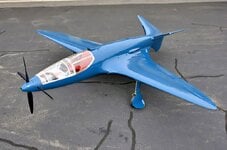There are pressure diagrams of some canopies either on a previous thread here or on YouTube. As I recall, the was a bubble canopy P-51 and either an earlier P-51 or a P-57 razorback.Which features influence the aerodynamics of fighter canopies and to what extent?
Of course there is the angled windshield and the flushness of struts. But what about curved windows?
Which fighters do you think have especially bad or good canopy aerodynamics?
Angular windscreens will see tremendous turbulence at the edges where the airflow spills over the side or the top. I haven't seen a pressure map, but I expect that the Bf109 is terrible. Curved surfaces allow something along the lines of laminar flow. Even curving the forward corners is far better.

